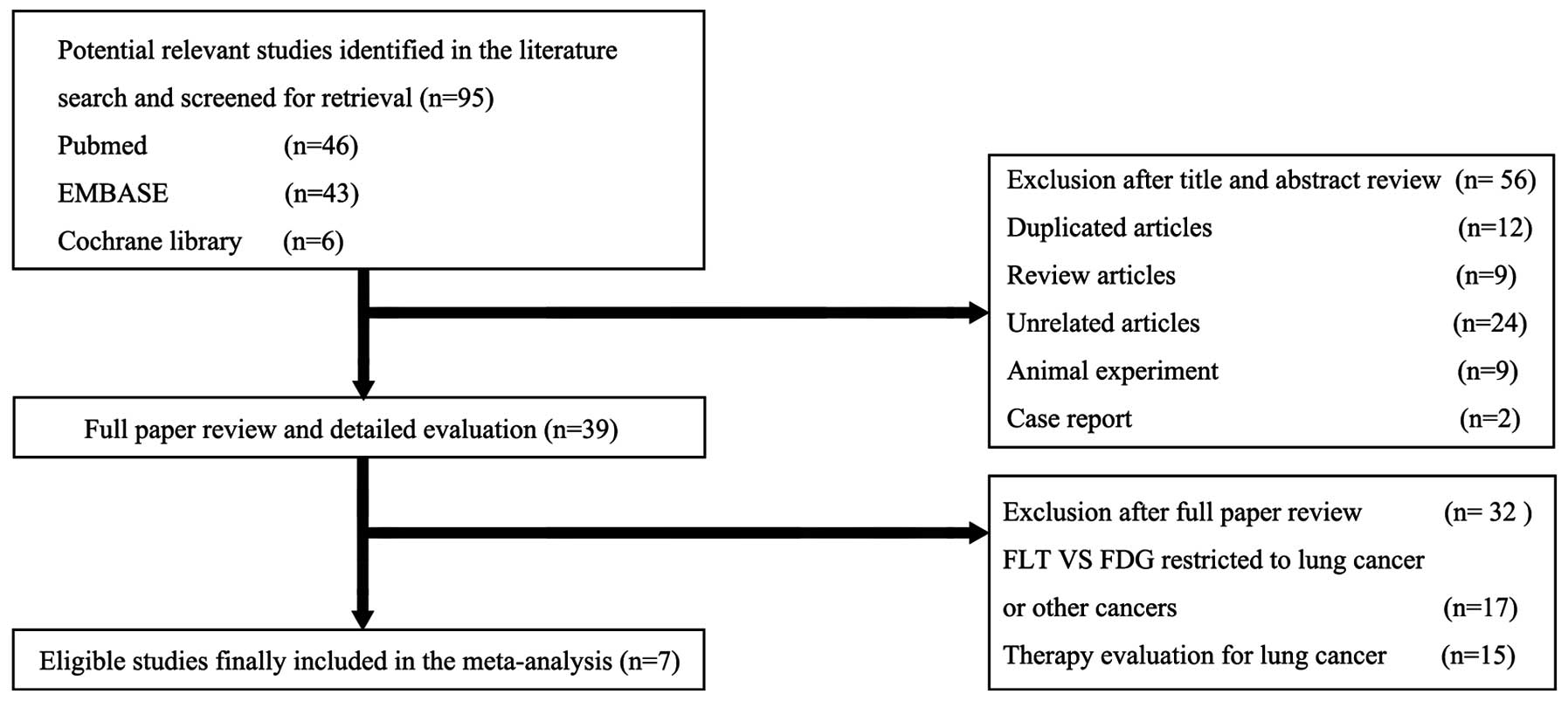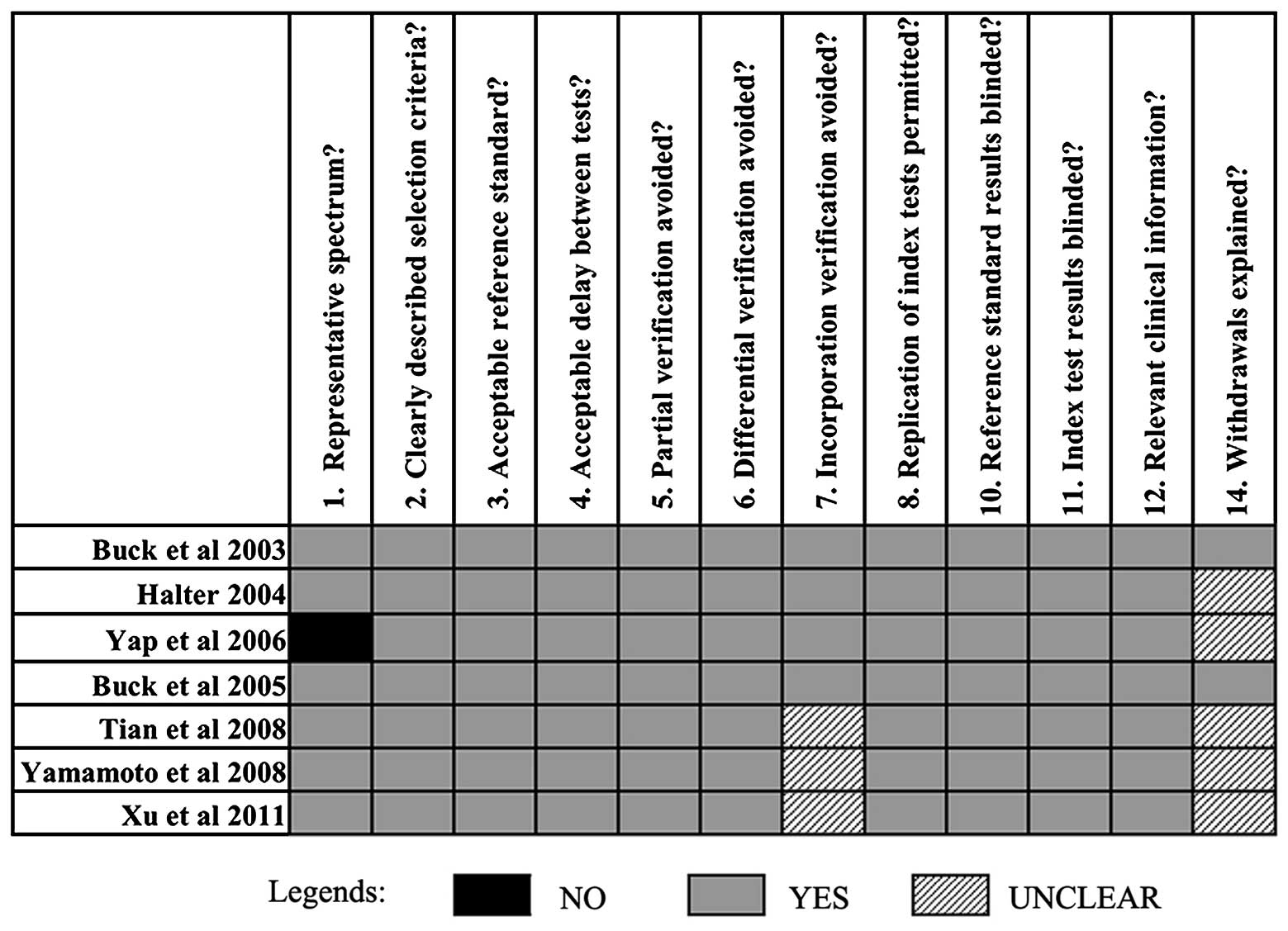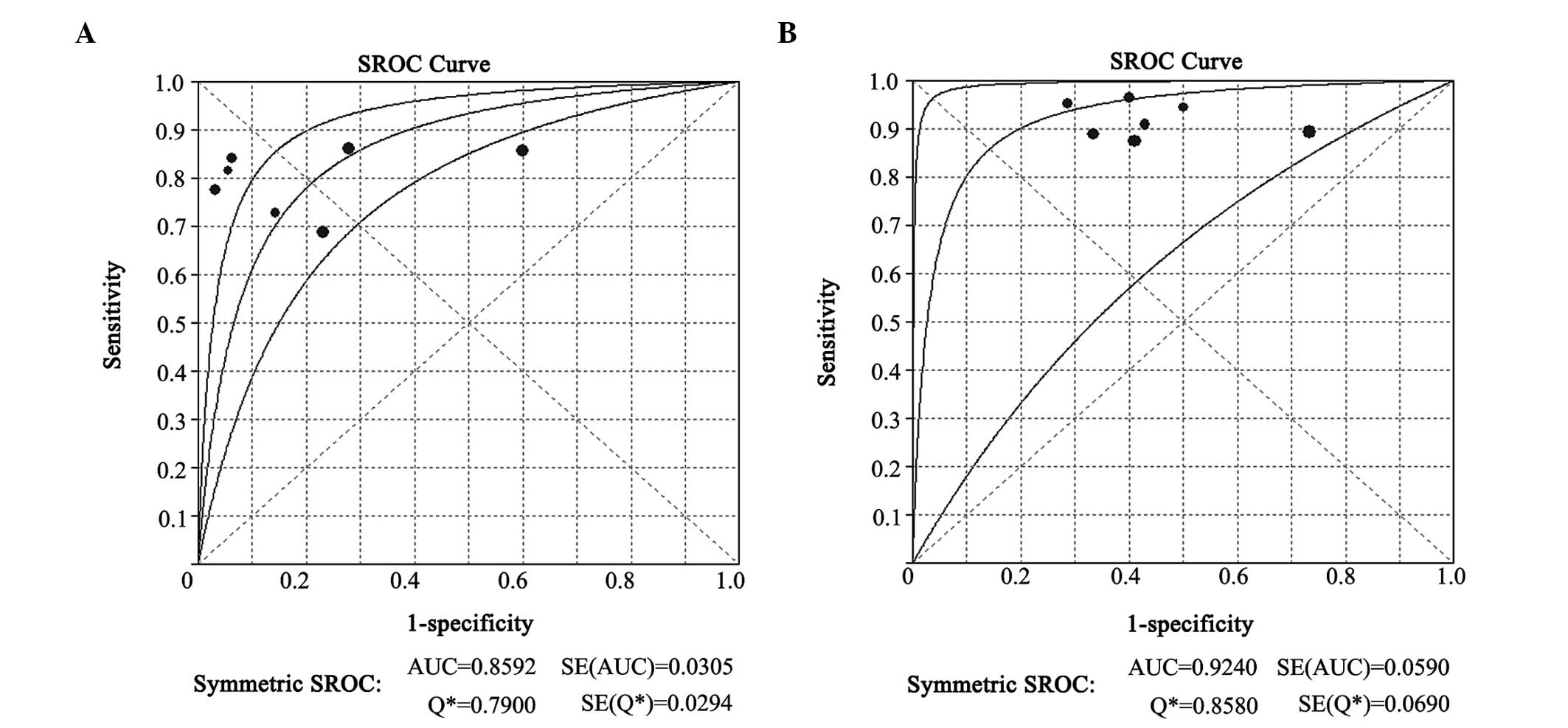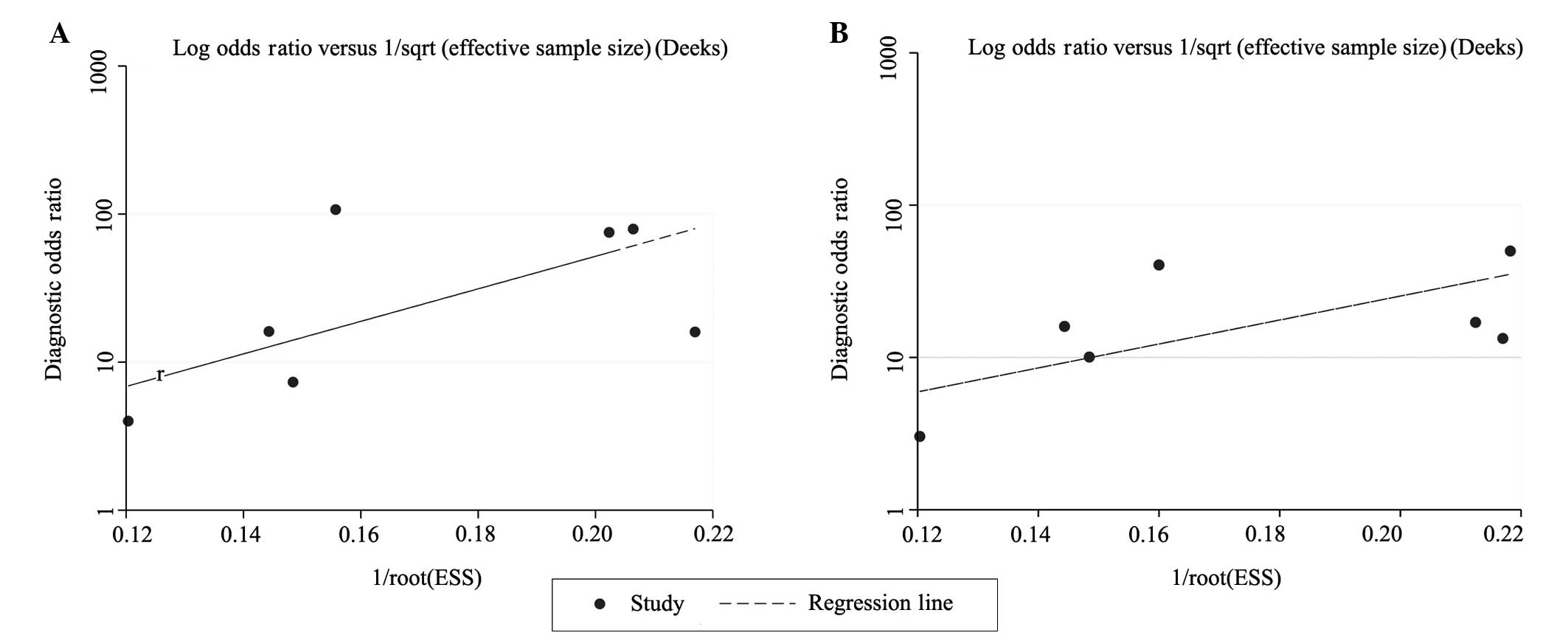|
1
|
Demura Y, Tsuchida T, Ishizaki T, et al:
18F-FDG accumulation with PET for differentiation
between benign and malignant nodules in the thorax. J Nucl Med.
44:540–548. 2003.
|
|
2
|
Changlai SP, Tsai SC, Chou MC, Ho YJ and
Kao CH: Whole body 18F-2-deoxyglucose positron emission
tomography to restage non-small cell lung cancer. Oncol Rep.
8:337–339. 2001.
|
|
3
|
Kaira K, Yamamoto N, Endo M, et al:
18F-FDG uptake on PET is a predictive marker of
thymidylate synthase expression in patients with thoracic
neoplasms. Oncol Rep. 31:209–215. 2014.
|
|
4
|
Shreve PD, Anzai Y and Wahl RL: Pitfalls
in oncologic diagnosis with FDG PET imaging: physiologic and benign
variants. Radiographics. 19:61–77. 1999. View Article : Google Scholar : PubMed/NCBI
|
|
5
|
Lee TS, Ahn SH, Moon BS, et al: Comparison
of 18F-FDG, 18F-FET and 18F-FLT
for differentiation between tumor and inflammation in rats. Nucl
Med Biol. 36:681–686. 2009.
|
|
6
|
Dittmann H, Dohmen BM, Paulsen F, et al:
[18F] FLT PET for diagnosis and staging of thoracic tumours. Eur J
Nucl Med Mol Imaging. 30:1407–1412. 2003.
|
|
7
|
Cobben DC, Elsinga PH, Hoekstra HJ, et al:
Is 18F-3-Fluoro-3′-deoxy-L-thymidine useful for the
staging and restaging of non-small cell lung cancer? J Nucl Med.
45:1677–1682. 2004.
|
|
8
|
Yap CS, Czernin J, Fishbein MC, et al:
Evaluation of thoracic tumors with 18F-fluorothymidine
and 18F-fluorodeoxyglucose-positron emission tomography.
Chest. 129:393–401. 2006.PubMed/NCBI
|
|
9
|
Grierson JR and Shields AF: Radiosynthesis
of 3′-deoxy-3′-[(18)F]fluorothymidine: [(18)F]FLT for imaging of
cellular proliferation in vivo. Nucl Med Biol. 27:143–156.
2000.
|
|
10
|
Buck AK, Halter G, Schirrmeister H, et al:
Imaging proliferation in lung tumors with PET: 18 F-FLT
versus 18 F-FDG. J Nucl Med. 44:1426–1431.
2003.PubMed/NCBI
|
|
11
|
Buck AK, Schirrmeister H, Hetzel M, et al:
3-deoxy-3-[18F] fluorothymidine-positron emission
tomography for noninvasive assessment of proliferation in pulmonary
nodules. Cancer Res. 62:3331–3334. 2002.
|
|
12
|
Vesselle H, Grierson J, Muzi M, et al: In
vivo validation of 3-deoxy-31-[18F]
fluorothymidine ([18F]FLT) as a proliferation imaging
tracer in humans: correlation of [18F] FLT uptake by
positron emission tomography with Ki-67 immunohistochemistry and
flow cytometry in human lung tumors. Clin Cancer Res. 8:3315–3332.
2002.PubMed/NCBI
|
|
13
|
Xu B, Guan Z, Liu C, et al: Can
multimodality imaging using 18F-FDG/18F-FLT
PET/CT benefit the diagnosis and management of patients with
pulmonary nodules? Eur J Nucl Med Mol Imaging. 38:285–292.
2011.PubMed/NCBI
|
|
14
|
Buck AK, Hetzel M, Schirrmeister H, et al:
Clinical relevance of imaging proliferative activity in lung
nodules. Eur J Nucl Med Mol Imaging. 32:525–533. 2005. View Article : Google Scholar : PubMed/NCBI
|
|
15
|
Halter G, Buck AK, Schirrmeister H, et al:
[18F] 3-deoxy-3′ fluorothymidine positron emission
tomography: alternative or diagnostic adjunct to
2-[18F]-fluoro-2-deoxy-D-glucose positron emission
tomography in the workup of suspicious central focal nodules? J
Thorac Cardiovasc Surg. 127:1093–1099. 2004.
|
|
16
|
Tian J, Yang X, Yu L, et al: A multicenter
clinical trial on the diagnostic value of dual-tracer PET/CT in
pulmonary nodules using 3′-deoxy-3′-18F fluorothymidine
and 18F-FDG. J Nucl Med. 49:186–194. 2008.PubMed/NCBI
|
|
17
|
Treglia G and Sadeghi R: Meta-analyses and
systematic reviews on PET and PET-CT in oncology: the state of the
art. Clin Transl Imaging. 1:73–75. 2013. View Article : Google Scholar
|
|
18
|
Xu G, Zhao L and He Z: Performance of
whole-body PET/CT for the detection of distant malignancies in
various cancers: a systematic review and meta-analysis. J Nucl Med.
53:1847–1854. 2012. View Article : Google Scholar : PubMed/NCBI
|
|
19
|
He YQ, Gong HL, Deng YF and Li WM:
Diagnostic efficacy of PET and PET/CT for recurrent lung cancer: a
meta-analysis. Acta Radiol. 55:309–317. 2014. View Article : Google Scholar : PubMed/NCBI
|
|
20
|
Kwee TC and Kwee RM: Combined FDG-PET/CT
for the detection of unknown primary tumors: systematic review and
meta-analysis. Eur Radiol. 19:731–744. 2009. View Article : Google Scholar : PubMed/NCBI
|
|
21
|
Zamora J, Abraira V, Muriel A, Khan K and
Coomarasamy A: Meta-DiSc: a software for meta-analysis of test
accuracy data. BMC Med Res Methodol. 6:312006. View Article : Google Scholar : PubMed/NCBI
|
|
22
|
Yamamoto Y, Nishiyama Y, Ishikawa S, et
al: 3′-Deoxy-3′-18F-fluorothymidine as a proliferation
imaging tracer for diagnosis of lung tumors: comparison with
2-deoxy-2-18F-fluoro-D-glucose. J Comput Assist Tomogr.
32:432–437. 2008.
|
|
23
|
Glas AS, Lijmer JG, Prins MH, Bonsel GJ
and Bossuyt PM: The diagnostic odds ratio: a single indicator of
test performance. J Clin Epidemiol. 56:1129–1135. 2003. View Article : Google Scholar : PubMed/NCBI
|
|
24
|
Bunyaviroch T and Coleman RE: PET
evaluation of lung cancer. J Nucl Med. 47:451–469. 2006.PubMed/NCBI
|
|
25
|
Mileshkin L, Hicks RJ, Hughes BG, et al:
Changes in 18F-fluorodeoxyglucose and
18F-fluorodeoxythymidine positron emission tomography imaging in
patients with non-small cell lung cancer treated with erlotinib.
Clin Cancer Res. 17:3304–3315. 2011.
|
|
26
|
Kahraman D, Holstein A, Scheffler M, et
al: Tumor lesion glycolysis and tumor lesion proliferation for
response prediction and prognostic differentiation in patients with
advanced non small cell lung cancer treated with erlotinib. Clin
Nucl Med. 37:1058–1064. 2012. View Article : Google Scholar
|
|
27
|
Kobe C, Scheffler M, Holstein A, et al:
Predictive value of early and late residual 18F-fluorodeoxyglucose
and 18F-fluorothymidine uptake using different SUV measurements in
patients with non-small-cell lung cancer treated with erlotinib.
Eur J Nucl Med Mol Imaging. 39:1117–1127. 2012. View Article : Google Scholar : PubMed/NCBI
|
|
28
|
Li XF, Huang T, Jiang HJ, et al: Combined
injection of 18F-fluorodeoxyglucose and
3′-deoxy-3′-[18F]-fluorothymidine PET achieves more
complete identification of viable lung cancer cells in mice and
patients than individual radiopharmaceutical: A proof-of-concept
study. Transl Oncol. 6:775–783. 2013.
|
|
29
|
Xu BX, Liu CB, Wang RM, et al: The
influence of interpreters' professional background and experience
on the interpretation of multimodality imaging of pulmonary lesions
using 18F-3′-deoxy-fluorothymidine and
18F-fluorodeoxyglucose PET/CT. PLoS One.
8:e601042013.
|
|
30
|
Grégoire G, Derderian F and Le Lorier J:
Selecting the language of the publications included in a
meta-analysis: is there a tower of babel bias? J Clin Epidemiol.
48:159–163. 1995.PubMed/NCBI
|













